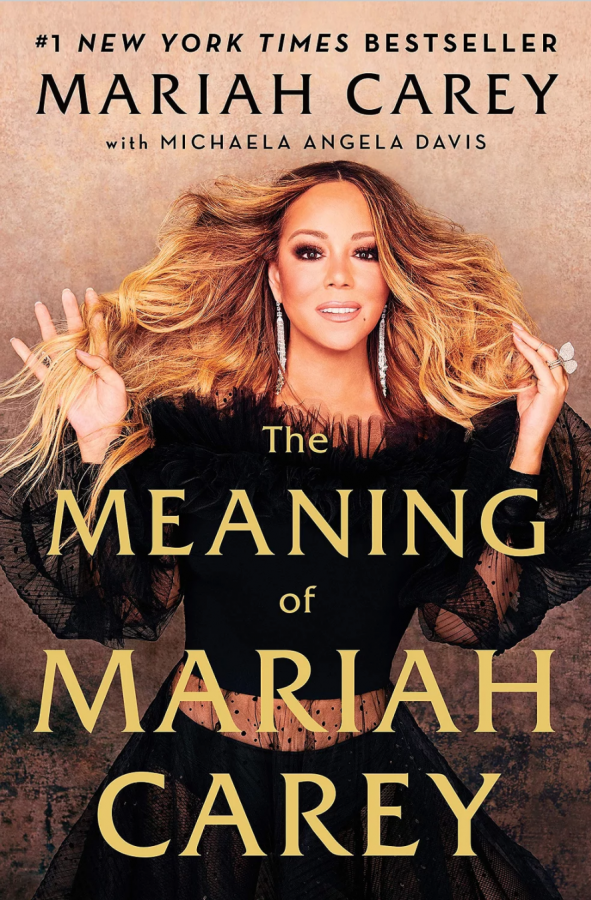It may not be Christmas season just yet (and believe me, we’re ready), but Mariah Carey’s recently-released memoir has already got me feeling some type of way. Available as of Sept. 29, the chanteuse delves deep into her personal life, excavating the childhood traumas, emotional abuse and career pitfalls that have molded her into the woman she is today.
The book makes a point to interweave light amidst a history drenched in darkness, showcasing many of the events that inspired her hit songs like “All I Want for Christmas is You,” as well as detailing fun and exciting moments—including concert performances with stars like Aretha Franklin and descriptions of her former boo-things Derek Jeter, Nick Cannon and others.
The book is divided up into four sections: “Wayward Child,” “Sing Sing,” “All That Glitters” and “Emancipation.” These follow a linear timeline, with memories echoed across sections throughout the book.
She begins by detailing the haunting complexities of her childhood, growing up in a dysfunctional family and moving 13 times around Long Island only to face incessant racism and neglect. She recalls endless fights between her older brother and parents, especially between her brother and father. On one occasion, 12 policemen had to intervene and pull them apart while Carey, at under three years old, witnessed the event in tears. She spent most of her childhood with her mother, but she recalls tension with everyone but her father from the start.
Prepare yourself: things are about to escalate even more. When Carey was 12, her sister drugged her with Valium, inflicted her with third-degree burns and tried to sell her out to a pimp. Her mother, a former Juilliard trained opera singer, had immeasurable jealousy over Carey and told her she could only hope to be half the singer she was. While her brother may not have engaged in the physical abuse, he often abandoned responsibility of taking care of her as a child, only exacerbating her vulnerability.
Evidently, Carey battled to cultivate her independence and confidence. In addition to the poor treatment she suffered at home, she details numerous racist events in high school that continue to pierce her memory. Her relationships with her parents became more stable as she matured, and Carey was able to find a glimpse of joy through the beginning of her music career as a background singer for artists like Lenny Kravitz and Brenda K. Starr—but that, too, wouldn’t last for long.
Though it is difficult at times for me to relate to Carey due to the nature of her traumatic childhood, I really appreciate how she gave an unrestrained voice to the young girl inside her desperate to share her story. Her memoir is a tale of survival and sends a powerful message for women. Most of all, the way she contextualizes the lyrics of her songs in her memoir completely reinvented my perception of her music. Behind an unrivaled voice spanning five octaves lies a woman who has battled to feel worthy of existence, using music as a saving grace to push forward. I can only imagine how Carey’s story of being an outsider will benefit countless people who feel lost in their place.
In her second section, “Sing Sing,” Carey details her pivotal transition from a background vocalist to a solo artist. Some of the songs on her demo tape, including “Alone in Love,” officially released on her debut album, developed out of her singing melodies with her mother’s piano. Carey said in her memoir that she clenched onto her demo wherever she went, because it was the only tangible evidence of her talent at the time. Though she had many offers during her late teenage years for a record deal, having the freedom to write songs was a necessity. After an pivotal party during which Carey encountered former Sony Music executive Tommy Mottola, she was able to secure a record deal and subsequently earn four #1 hits with her debut album.
While the triumph of this success was invaluable to her, Carey’s personal life grew weary after marrying Mottola nearly five years later at 23 years old (he was 44). The bulk of “Sing Sing” (a nickname of her former mansion with Mottola in which she felt like a prisoner and could only sing and sing), details the intensity of this marriage, arguably the darkest period in Mariah’s life. Mottola had her constrained inside Sing Sing, hiring security to monitor her on cameras and eavesdrop on conversations through intercom. She details the various ways in which Mottola also tried to control her self-image and music style, attempting to represent her as someone she didn’t identify with—he wanted to present her as a white artist.
When Carey finally told Mottola she wanted to leave him, to liberate herself, it was not an easy task. She recalls an instance of him pressing a knife to her face as a threat. Though she was able to successfully divorce him, Mottola still shadowed over Carey. The emotional abuse she endured has never escaped her mind, and songs like “Side Effects,” written nearly 10 years after her divorce, reinforce its everlasting impact.
After Carey’s divorce however, she made a shift in her entire career, finally getting to be the artist she dreamed of being. She engaged in a few love affairs, most notably Derek Jeter, who inspired a few songs including “My All.” She describes happy moments from her relationship with Jeter, and subsequently Luis Miguel. However, throughout both these relationships, Mottola’s presence stayed with her.
While there are many vivid stories in Carey’s memoir, her recount with Jeter was arguably one of the most intriguing moments to me. She reveals countless songs off her album “Butterfly” that allude to her feelings about him, and fans have speculated that songs in later albums like “Charmbracelet,” made several years after their affair, still hint at their relationship. Being that Carey has written nearly every lyric she has sung, I would have liked for her to dive into the meaning behind more of her obscure songs that weren’t hit singles. Perhaps she didn’t want to over discuss this affair, but in any case, with 15 studio albums and hundreds of songs in her repertoire, there are undoubtedly parts of her story still left to be revealed.
In section three, “All That Glitters,” Carey explains and addresses the alleged rumors behind Mottola’s involvement in her breakdown. “All That Glitters,” eventually renamed to “Glitter,” was her up-and-coming autobiographical film which starred Carey, featuring songs from her 2001 80s inspired album of the same title. Though she had successfully completed her album as she was working on the movie, dodging conspiratorial hoops from Mottola as he licensed pieces of her work to other artists like Jennifer Lopez. The production drama and the various changes demanded led to Carey’s hospitalization for exhaustion, while tabloid journalists framed her as emotionally unstable. Though Carey was indeed exhausted, she details how the whole scenario was unnecessary and a direct result of her family calling the police in an attempt to take advantage of her. Unfortunately, Carey’s movie was eventually released on the same day as the Sept. 11 attacks, demonstrably accounting for its failure in the box office.
In her final section, “Emancipation,” Carey details her spiritual rejuvenation from “Glitter,” diving into the development of new albums including the “Emancipation of Mimi,” which contains “We Belong Together,” the Billboard Song of The Decade for the 2000s (Carey also holds this record for the 90s with “One Sweet Day”). Fortunately, Carey had countless positive memories to share in this section, including her acting experience for “Precious,” where she was able to redeem herself as an actor, and plenty of cute highlights of her marriage to Nick Cannon.
After reading the memoir, I understand that it’s far more than another celebrity’s reminiscence of her journey to fame. “The Meaning of Mariah” reinforces the beauty of keeping faith and protecting one’s dreams, and I never had half the idea that the singer responsible for some of the most successful and jolly Christmas albums of all time had such haunted underpinnings. Though her memoir is predominantly built on the dark moments in her life, the events described in “Emancipation” reinforces the positive singer we know today.
Carey’s memoir is available in print, e-book and audio format. If that’s still not enough Mariah for you, her newest Oct. 2 album, “The Rarities,” is available on most streaming platforms and contains unreleased songs up to 30 years old.





